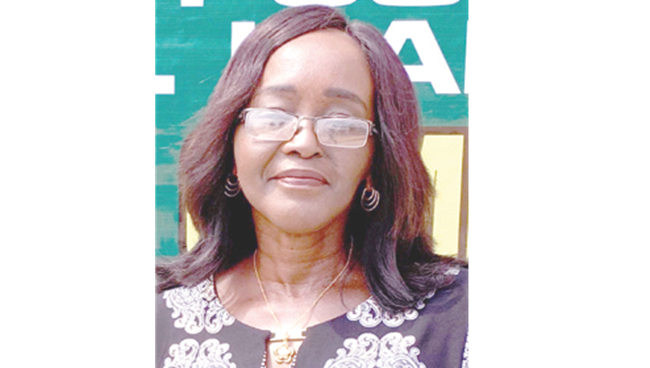

Dr Jokotade Adeleye, a consultant endocrinologist at the University College Hospital (UCH), Ibadan, in this interview with SADE OGUNTOLA, speaks on the importance of regular blood glucose monitoring in persons with diabetes mellitus and when a test for ketones may also be important in persons with diabetes.
Diabetic ketoacidosis (DKA) and hyperglycemia hyperosmolar state (HHS) are two serious complications of diabetes. Why is this so?

Diabetic ketoacidosis and hyperglycemia hyperosmolar state are serious complications of diabetes. They are known as the hyperglycaemic (high blood glucose) emergencies. They are acute complications of diabetes associated with deficiency of insulin (a hormone produced by the pancreas), very high blood glucose, and alteration in the chemical reactions in the body’s cells. They can be life-threatening if not promptly diagnosed and effectively treated.
Diabetic ketoacidosis is typically associated with type 1 diabetes mellitus, in which there is an absolute deficiency of insulin. Insulin is a hormone produced by an organ in the body called the pancreas, while glucose is an important source of energy for the cells of the body. Glucose comes from two major sources: food and the liver. The body breaks down carbohydrate foods into glucose in the blood, while the liver stores and produces glucose depending on the body’s need. Insulin acts like a key to a door to let glucose from the food we eat pass from the bloodstream into the body cells, where it is then used to produce energy for the body. The storage or production of glucose by the liver is also regulated by insulin. In type 1 diabetes mellitus, insulin levels are very low or almost immeasurable. In diabetic ketoacidosis, because the body cannot use glucose efficiently due to the marked deficiency of insulin, the body begins to use fats as an alternative source of energy. Consequently, there is an increased breakdown of fats that generates a substance called ketones in the bloodstream. In small amounts, ketones are not harmful. However, if ketone levels accumulate excessively, they make the blood acidic and toxic and can result in a potentially life-threatening condition called diabetic ketoacidosis.
What are the causes and symptoms of these complications of diabetes?
The hallmarks of diabetic ketoacidosis are raised blood glucose level, weakness, tiredness, passing of excessive amounts of urine, abdominal pain, and difficulty with breathing that is typically deep and rapid. It can also cause further alteration in the level of consciousness, ranging from drowsiness to deep coma. So, if it is not diagnosed and treated in time, it can lead to critical illness and premature death.
Hyperglycaemic hyperosmolar state is another type of medical emergency that can occur in individuals with diabetes. In this condition, these persons have enough insulin to prevent the formation of excessive amounts of ketones, but not enough to prevent an extremely high blood glucose level. As such, they begin to pass loads and loads of urine and become very dry, very weak, and drowsy. It can result in impaired level loss of consciousness and coma and lead to death if not diagnosed in time or if not effectively managed.
Diabetic ketoacidosis is typically associated with type 1 diabetes but can also occur in persons with type 2 diabetes. On the other hand, hyperglycaemic hyperosmolar state is typically associated with type 2 diabetes mellitus. In persons with type 1 or type 2 diabetes, hyperglycaemic emergencies can be precipitated by poor compliance with treatment, serious infections, omission or sudden cessation of insulin injections, medications like steroids and certain anti-psychotic drugs, as well as critical illnesses like stroke and heart attack.
Are people aware of diabetic ketoacidosis and hyperglycemia/hyperosmolar state as complications of diabetes in Nigeria?
These medical emergencies of diabetes are not commonly discussed with/amongst the general public. These are serious complications of diabetes that develop over a short period of time in persons with diabetes mellitus, and we need to raise a lot more awareness about them. This will aid its prevention, early recognition, and taking prompt steps so as to reduce the attendant sickness and premature death that they can cause.
For example, a patient with type 1 diabetes who notices nausea and vomiting but has not been using his or her insulin regularly shouldn’t assume it is malaria. It may be much more than that. Or that patient with type 2 diabetes mellitus who’s had poor blood sugar control and now has a nasty infection or any other stressor can be tipped over into any of the two hyperglycaemic emergencies. Yes, public knowledge on these complications of diabetes is inadequate.
Therefore, do persons with diabetes need to monitor for ketones?
There are (urine) strips that can be used to test the urine for ketone, it can be measured in laboratories, and there are also point-of-care devices that can be used to measure levels of ketones in the blood. Persons with diabetes who wish to monitor for ketones at home could do this using urine dipsticks that test for ketones. This is usually advised at the time when they are feeling ill or sick. If there are ketones in the urine, such persons should seek medical advice promptly. This is done in addition to testing the blood glucose level at various times throughout the day.
What are the signs of high blood glucose that should not be ignored?
Well, a person with diabetes shouldn’t even wait for abnormal signs to appear before testing their blood glucose. That’s why it’s important to check your blood glucose on a regular basis if you’ve ever been told you have diabetes or abnormal blood glucose levels.
Signs of high blood glucose a person with diabetes should not ignore include passing urine in large amounts and frequently, increased thirst, feeling unusually weak and tired, being sleepier than usual, and losing weight unexpectedly. These are signs that things have gone much worse than they should be. However, one really shouldn’t wait until those signs appear. If you are monitoring your blood glucose regularly, you know what the targets are, and steps can be taken to prevent or deter things getting to the point where one develops the symptoms or signs above. .
Are there things people with diabetes need to know about ketones and about ketosis?
One, in the absence of insulin or if insulin levels are inadequate, the body cannot use glucose efficiently. So, the body turns to the fat stores to generate energy and a byproduct of the process is the ketone. So the presence of ketone in the urine or elevated levels of ketones in the blood tells you that the body does not have enough insulin necessary for normal metabolism, and control of the blood glucose. it is important to let healthcare providers and people living with diabetes know that it’s not just the blood glucose alone that needs to be checked. Sometimes we check for ketones in the urine or ketones in the blood in people with diabetes or persons suspected to have diabetes, particularly when there are red flags such as passing a lot of urine, feeling very weak or tired, altered level of consciousness, such as drowsiness and difficulty with breathing.
Read Also: Obaseki embarks on post-tenure medical vacation
From your years of experience taking care of people with diabetes, what would be your advice for them to be healthy?
Whatever type of diabetes you have, whether type 1 or type 2, first you need to know about the disease. Knowledge is power. Diabetes education is crucial to empower persons with diabetes to have adequate knowledge of the disease and to enable good self-care. Proper management of diabetes includes: learning as much as one can about diabetes, making healthy food choices, regular physical activity, achieving and maintaining a healthy weight, monitoring the blood glucose level on a regular basis, and taking medications as prescribed by the doctor. In persons with Type 1 diabetes, multiple daily insulin injections are needed to control the blood glucose levels.
Treatment of type 2 diabetes also requires a lifelong commitment to healthy eating and regular exercise. Achieving weight reduction is equally also very important in the overweight or obese person with type 2 diabetes mellitus. Medications for controlling the blood glucose in persons with type 2 diabetes include tablets and non-insulin injectables, and in some persons with type 2 diabetes, insulin injections are also required to control the blood glucose.
Effective management of the blood glucose is essential to prevent hyperglycaemic emergencies and the long-term/chronic complications of diabetes.
In the management of diabetes, regular blood glucose testing and monitoring of glucose patterns and trends will help patients and their health care team know whether the treatment plan is working or needs adjusting. Self-monitoring of blood glucose (SMBG) is an important part of diabetes management. If done regularly, it can help you monitor your progress and also help with observation on how food, activity, and medications affect the blood glucose levels. It is advisable that one keeps a proper record of the results, so you can track your progress over days, weeks, or months and discuss it with your health care provider. Regular self-monitoring of blood glucose will also enable you to detect low blood glucose (hypoglycemia) and treat it early and appropriately.
It is important to know how to interpret the results obtained from blood glucose testing and to know the right actions to take based on the results. Testing times and frequency depend on the medication the person with diabetes is receiving and if blood glucose is well controlled or poorly controlled. Your healthcare provider can advise you regarding how often you should test your blood glucose with your glucometer. There are also times when one should check more often than usual, such as when you’re sick or if you’re starting a new diabetes medicine or if your dose of your medicine has been changed.
All persons with diabetes should also have a laboratory test called glycated haemoglobin (HbA1c) every three to six months. Results of the HbA1c test reflect average blood glucose over a two to three months period. The higher the HbA1c is above the desired target, the greater the risk for developing complications. Persons with diabetes should know what their blood glucose targets are and what their HbA1c target should be. If your blood glucose results are persistently above target, consult your doctor.
By keeping your HbA1c and blood glucose levels in the desired target range, you’ll greatly reduce your chances of developing complications of diabetes such as the hyperglycaemic emergencies (DKA and HHS), as well as the chronic complications that can arise from damage to the blood vessels that supply organs like the brain causing stroke, the kidneys leading to kidney failure, the foot complications that can cause nasty foot ulcers and lower limb amputation, and damage to the eyes leading to visual impairment and blindness.








